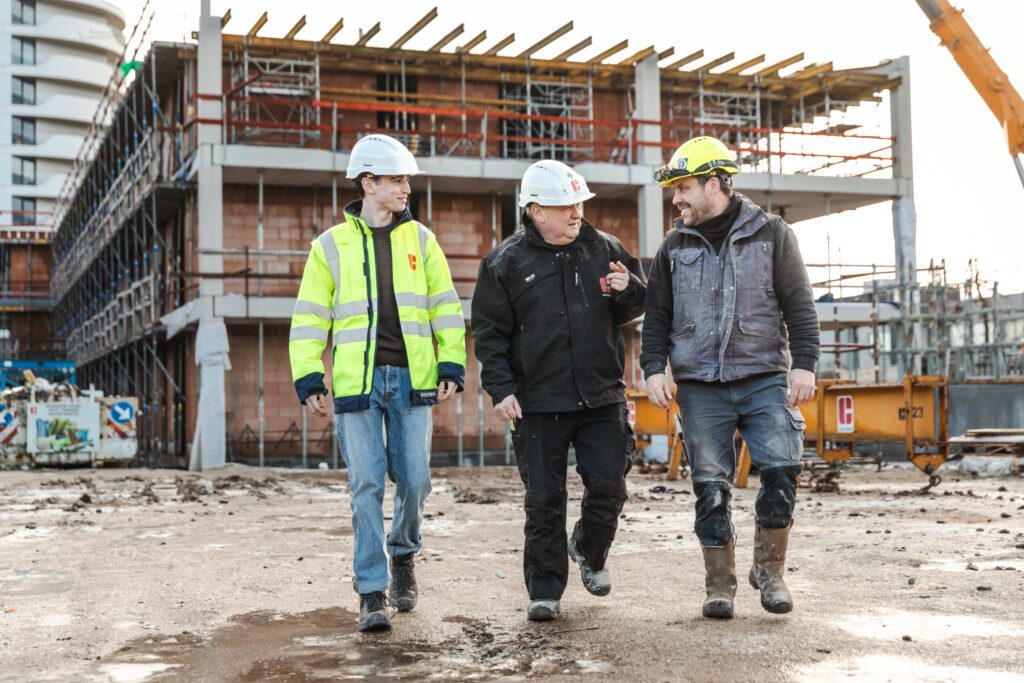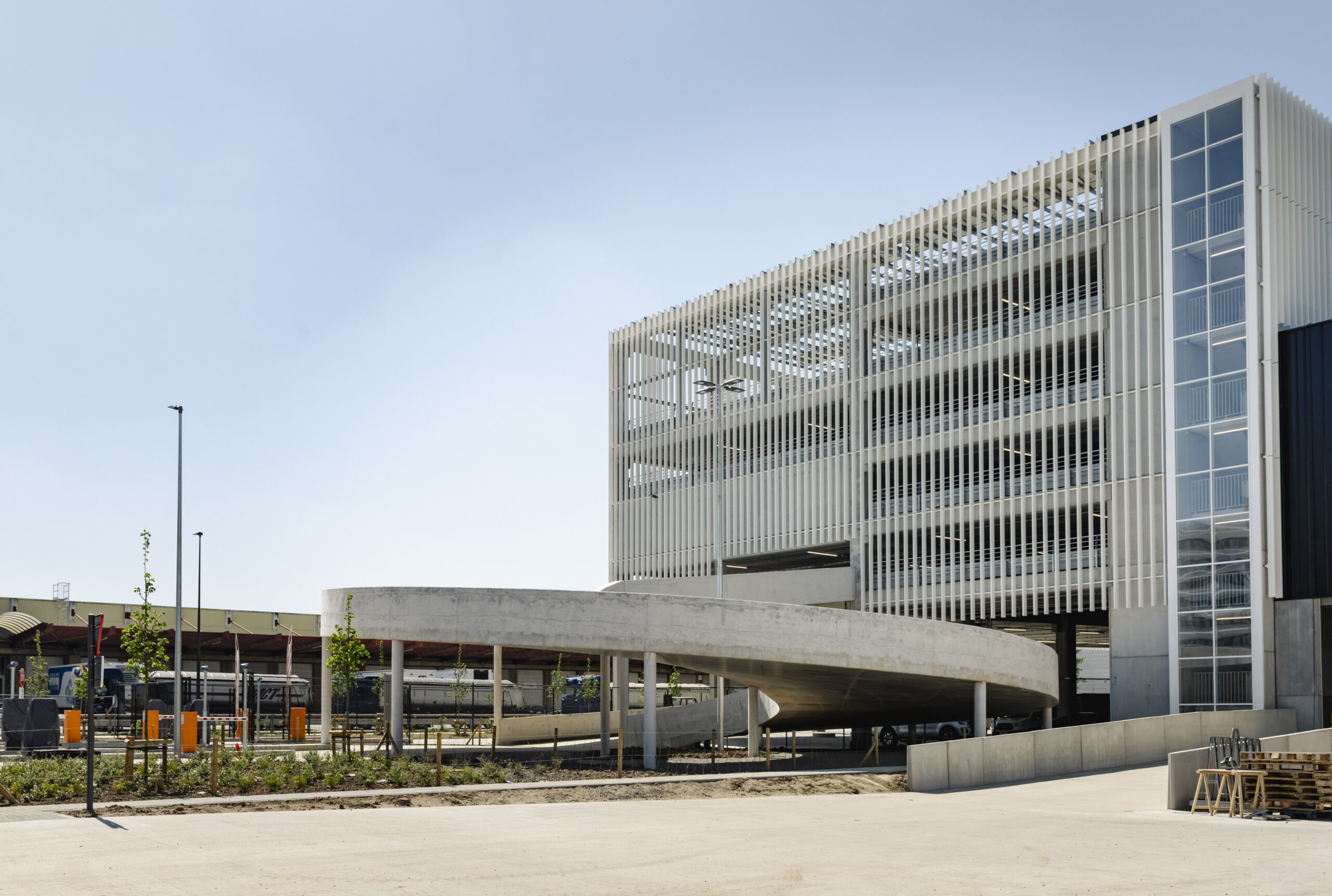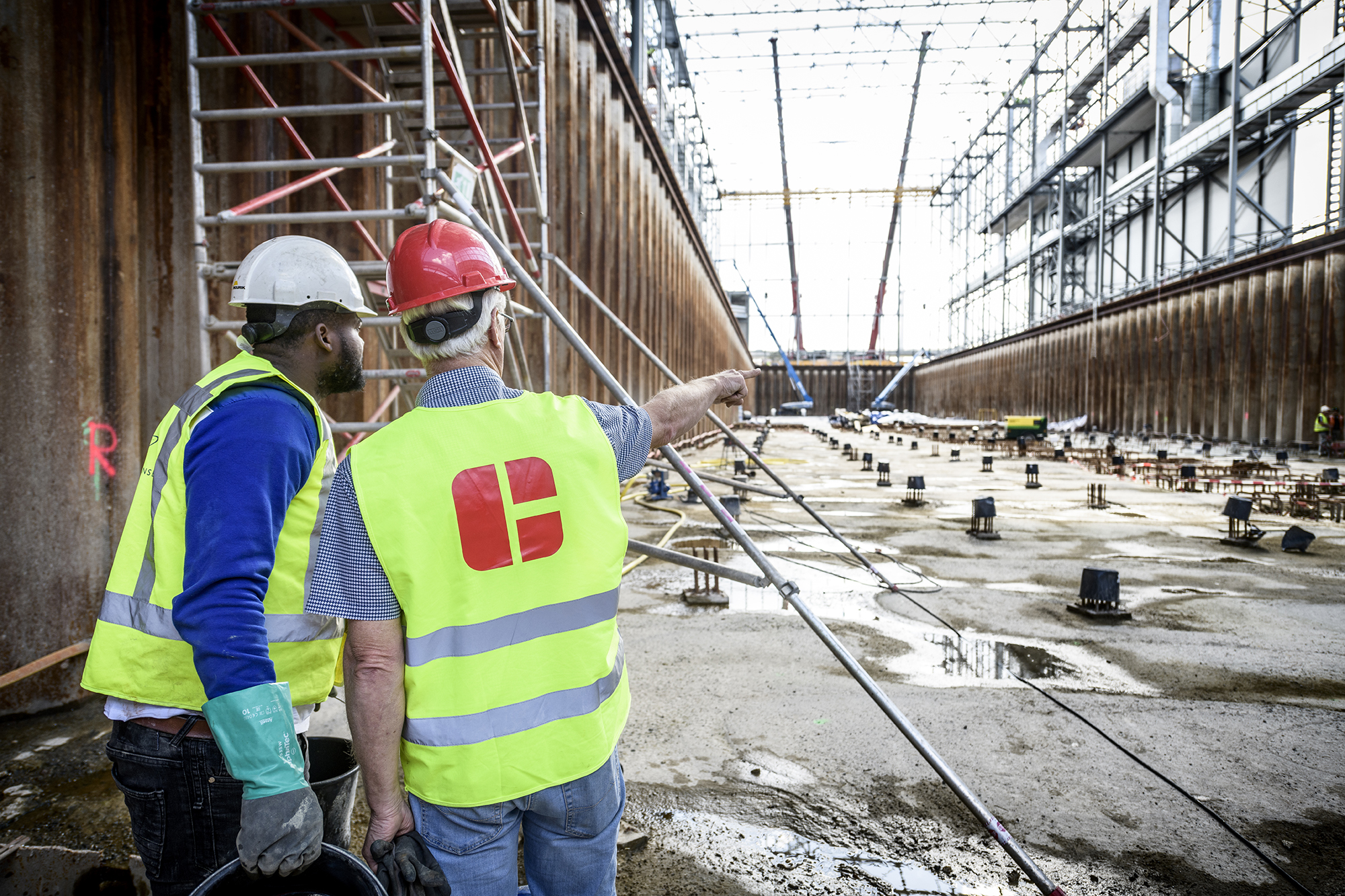Waste

The construction and demolition sector is responsible for about a third of all waste generated in the European Union. Our big goals are to
- prevent anything from becoming waste as much as possible by increasing our focus on mapping what’s inside our building (material passports) and using circular building practices (e.g. design for disassembly)
- Reduce the amount of waste throughout the entire Group
The industrialisation of the construction process is key to reduce waste: By prefabricating concrete structures in a weather-proof, industrial environment, we can decrease potential mistakes on-site and avoid waste being created in the first place.
Additionally, we will focus on splitting waste streams better and trying to find suitable applications for those waste streams. We acknowledge that what might be waste for us, might still be a valuable resource for others. By setting up partnerships across our value chain we will try to valorize our waste streams, keeping them in the loop as materials and therefore accelerating the circular economy.

Waste generated
In the reporting year, Cordeel generated 29,043.3 tons of waste. Within our operations, the most prevalent waste streams are construction and demolition debris, stony materials, residual waste, wood and scrap metal.
This year, we tracked the KPI’s linked to CSRD to measure and assess our waste management and reduction efforts.
The large amount of materials prepared for reuse is linked to two renovation projects, more specifically to the stony materials from partly demolition.
The calculation of waste information has been made by consolidating the data from the waste collector or invoices. Information on waste treatment comes from contracts with licensed waste operators and waste code on collection slips.
E5-5, DP 38, 40
*scope: all companies from Belgium & the Netherlands

Waste diverted from disposal
E5-5, DP 37b
Total amount of non-hazardous waste diverted from disposal
| Indicator | Value | Unit |
|---|---|---|
| Total amount of non-hazardous waste diverted from disposal by preparation for reuse | 16,427 | tons |
| Total amount of non-hazardous waste diverted from disposal by recycling | 6,355 | tons |
| Total amount of non-hazardous waste diverted from disposal by other type of recovery operations | 2,019 | tons |
| Total | 24,081 | tons |
Total amount of hazardous waste diverted from disposal
| Indicator | Value | Unit |
|---|---|---|
| Total amount of hazardous waste diverted from disposal | 0 | tons |
| Total amount of hazardous waste diverted from disposal | 105 | tons |
| Total amount of hazardous waste diverted from disposal by other type of recovery operations | 264 | tons |
| Total | 369 | tons |
Waste directed to disposal
E5-5, DP 37c
Total amount of non-hazardous waste directed to disposal
| Indicator | Value | Unit |
|---|---|---|
| Total amount of non-hazardous waste sent to incineration | 4,548 | tons |
| Total amount of non-hazardous waste sent to landfill | 17 | tons |
| Total amount of non-hazardous waste sent to other disposal operations | 18 | tons |
| Total | 4,583 | tons |
Total amount of hazardous waste directed to disposal
| Indicator | Value | Unit |
|---|---|---|
| Total amount of hazardous waste sent to incineration | 8 | tons |
| Total amount of hazardous waste sent to landfill | 2 | tons |
| Total amount of hazardous waste sent to other disposal operations | 0.3 | |
| Total | 10.3 | tons |
Zooming in on actions for waste reduction
E5-2, DP AR 11, 20e
Collaboration with material banks
Overstocks are given to material banks or thrift shops (“Kringloopwinkel”) so that the materials get a second life.
Materials that return from construction sites of Cordeel zetel Temse and are not reused on other construction sites in a certain period are also given to material banks.
C-concrete
The remaining surplus of concrete is used to produce jerseys that are used on our HQ in Temse, construction sites or in Zutendaal at C-ground.
Steel waste from production is given to the supplier of connection bolts. They are producing new bolts from it which we use for the transportation of our prefab elements. Additional steel waste represents only 3-4% of the total weight.
Formwork wood waste: The formwork is being reused as long as possible. Recycling of unusable pieces and pieces that are too small
“Throwaway pallets”: collaboration with Recubela
Since Q4 2023 we give the “throwaway pallets” in Temse to Recubela. Instead of being recycled or incinerated, they are being restored by a social enterprise and eventually sold again. This avoids costs and waste on our side and the consumption of new resources for the production of pallets.
Raising awareness – World Cleanup Day
In September, our construction sites participated in the World Cleaup Day. They used the last hour of the workweek to tidy up the construction sites to have a clean and organised site.

